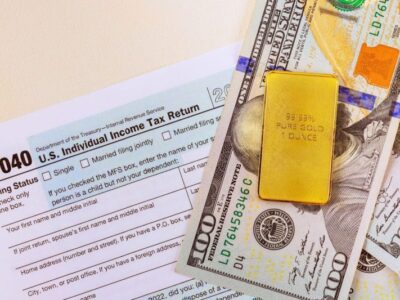
The Fed’s Fight Against Inflation Could Cost Black Workers The Most
The gap between white and Black employment rates has virtually vanished, but it might not last for long.
Ting Shen / Xinhua via Getty Images
When the world grinded to a halt back in March 2020, one of the most tried and true rules of the U.S. economy once again reared its ugly head: When the economy goes into crisis, Black workers are disproportionately harmed — and are often the first to be affected. Unemployment spiked for everyone in April 2020, but to a considerably higher level for Black workers than the country as a whole. The share of all Americans who had a job fell, but it dropped even more for Black Americans. And existing wage and wealth gaps reinforced and even exacerbated those racial inequities, as Black workers had less saved up for the rainiest of days — or years — in our economy.
Since then, however, something unexpected has happened: Black workers have made some of their biggest economic gains in recent memory. According to data from the Bureau of Labor Statistics, median weekly earnings for Black workers rose by 11.3 percent from 2021 to 2022, larger than the 7.4 percent gain for all Americans. The Black unemployment rate is lower than it was at the start of the pandemic. And a greater share of Black Americans is employed than at any time since July 2001, as the gap between white and Black employment rates has virtually vanished — continuing a narrowing trend that actually predates the pandemic:
A fairly robust canon of scholarship has found widespread, systemic discrimination against Black Americans in the labor market, ranging from employers who penalize job applicants with “African American sounding names,” to perceptions of drug use stifling Black employment, to Black workers earning consistently lower wages for the same work done by white counterparts. The deck is stacked against Black workers in other ways, too, as the decline of manufacturing jobs during the age of globalization, racial gaps in educational attainment and an insufficient minimum wage have all contributed to a monumental loss of earnings for Black Americans.
But just how unlevel the playing field is also depends on the economic times we’re in, and that can help shed some light on why Black workers have made a comeback.
“When the labor market gets very tight, employers are getting more desperate for applicants and for hires. When there’s fewer applicants for each job opening, employers give a closer look to workers who maybe they would have dismissed when they had a big, tall stack of applications,” said Aaron Sojourner, a senior researcher at the W.E. Upjohn Institute for Employment Research.
The converse is true, too, as Black workers tend to suffer when demand for jobs is high, making it easy for employers to discriminate without facing consequences for shrinking their talent pool. But right now, the number of unemployed Americans per job opening is at a 15-year low, according to the Bureau of Labor Statistics. That tight labor market — and the shifting demographics of the United States, where the white share of the workforce is shrinking — has translated to a relatively fruitful economic environment for Black workers.
Of course, the flip side is that economic crises tend to fall the hardest on more marginalized workers — and Black Americans tend to feel the brunt of the burden. Following the Great Recession, it took only slightly longer for the Black unemployment rate to reach its pre-recession point, compared to white Americans. The only problem was that Black unemployment was much higher to begin with, as the pre-crisis “normal” for Black unemployment hovered around 8 percent, compared to just 4 percent for white Americans. That roughly 2-to-1 relationship between Black and white unemployment has held true for a long time, according to Elise Gould, a senior economist at the Economic Policy Institute. The gap is especially harmful during times of crisis — when Black workers routinely face unemployment rates upwards of 15 percent — but it also means that Black and other marginalized workers can see their unemployment rates drop faster than white workers.
“If the unemployment rate goes down by 1 percentage point, Black workers often see a decline of 2 percentage points,” Gould said. “And so Black workers tend to be like many other historically marginalized workers, batted around more in the business cycle, while white workers may be a little bit more insulated from the more extreme ups and downs.”
That racial gap in unemployment persists, too, at least in part because Fed policymakers have long tolerated lower Black employment as an intractable fixture of the economy, justified by Black Americans’ lower educational attainment and skill levels — even though there’s little evidence for that explanation, according to William Spriggs, a professor of economics at Howard University and chief economist for the AFL-CIO. Arguing against the notion that this disparity is based on an education or skills deficit, Spriggs pointed to the fact that white Americans without a high-school diploma typically experience lower unemployment than all Black Americans. And the Fed’s success story of bringing down inflation in the 1980s, as Spriggs sees it, leaves out the fact that the economic progress that Black Americans had made over the prior decades was wiped out by a crushing recession.
“The Federal Reserve created the worst labor market since the Great Depression, deliberately,” Spriggs said. “The Fed now memorializes this as, ‘This is our ideal. This is what we did. This was fantastic. We beat inflation.’ They also put Black people into a depression for over 10 years. Black people were living under a Great Depression.”
Furthermore, we also know that this current tight, favorable labor market for Black Americans is unlikely to last long — and its dissipation could have dire consequences. In the present economic moment, where tamping down on inflation remains the Fed’s top priority, policymakers have been presented with a significant tradeoff — one that has consequences for millions of workers and harkens back to the one it faced in the ’80s: How much unemployment are we willing to tolerate to bring down inflation? For Black workers, it’s a good bet that whatever number the central bank settles on, they will face a labor market that’s even worse than average — and that the wage growth enjoyed by lower-wage workers, who are disproportionately Black and Latino, will be short-lived.
Gould doesn’t see the Fed’s tradeoff as a fair one, as she says inflation wasn’t caused by the labor market, but the most vulnerable workers — whose gains have been beating inflation — are likely to bear the brunt of any economic belt-tightening.
“The solutions that the Federal Reserve is following to slow the economy are actually not getting at the source of where the inflation is coming from,” Gould said. “So then the risk is, you raise interest rates too high, and you cause a recession … and that’s going to lead to disproportionate numbers of Black workers losing their jobs or low-wage workers losing their jobs.”
And if we are heading for a recession, we also know that the pandemic-era social safety net won’t be around this time to provide cushion for marginalized workers, which is one reason why the effects of the next crisis will be more acutely felt by Black Americans. Sojourner said he expects the next recession to look a lot less like the pandemic recession and more like the Great Recession, a crisis in which Black families lost nearly half of their household wealth.
That’s not to say with certainty that we are or are not headed for a recession. (No one really knows yet.) But if history is any indicator, there are reasons to believe that Black Americans would feel the sharpest pain from a contracting economy — and their recent economic gains would be in serious jeopardy.








